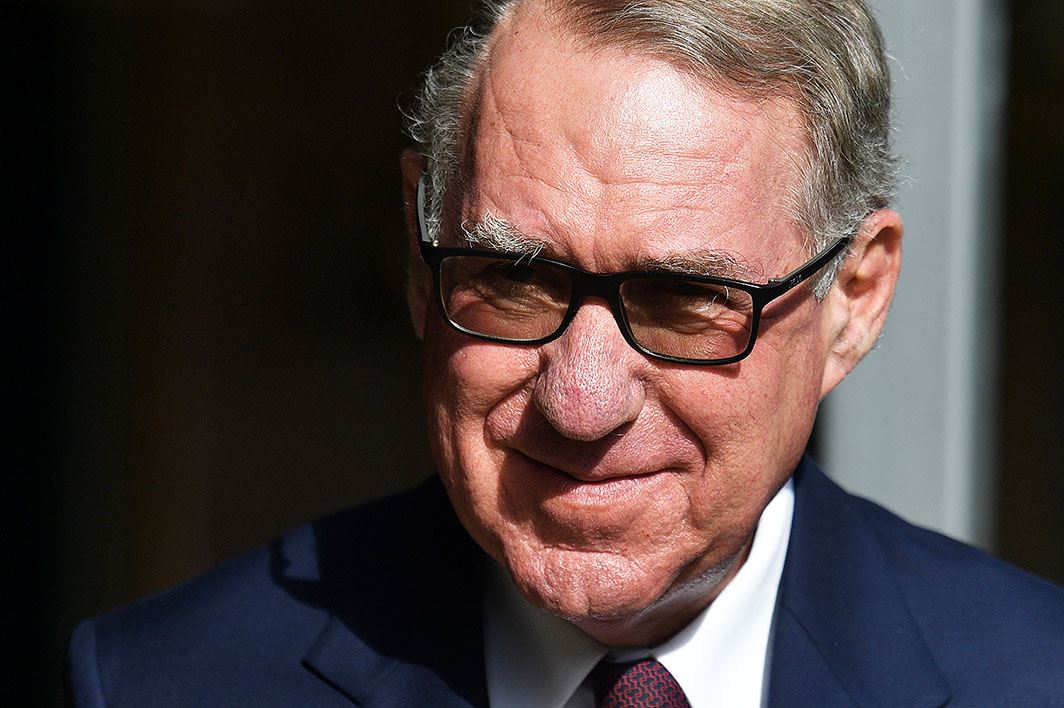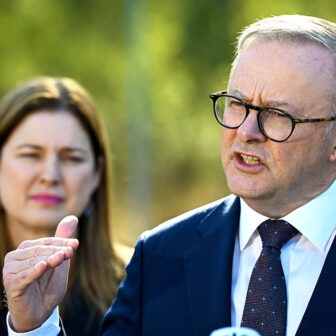We are in the middle of yet another school review. In recent months twenty-one Australian schools have been visited by members of the federal government’s Review to Inform a Better and Fairer Education System. Most of the reviewers have some familiarity with schools, but getting closer to the chalkface is all the better if you are deliberating on their future.
Years ago, David Gonski and his panel also visited schools as part of their deliberations. But something got lost when their recommendations were translated into spending by state and federal governments. Will it be different this time around for the schools visited by the latest panel, and the 24,000 people who recently completed the review’s survey? Will the review, as its title suggests, create a better and fairer future?
Looking at the schools Gonski visited in 2011 might help answer those questions. Are they any better off, or do they still exhibit the contrasts and inequalities that have dogged schools for so long?
The Gonski panellists certainly witnessed contrasts. Gonski himself saw them firsthand in two little schools, one public and the other private, in western Sydney. The principal of the public school spoke to him about the struggle to get all the kids to school. His counterpart in the Catholic school had a solution: “If we have truancy, I tell the parents to take their kids away.” He had witnessed Australia’s unlevel school playing field in action.
Between them, members of Gonski’s panel visited thirty-nine public and private schools in urban, regional and remote settings. While those schools may not have been representative in any statistical sense, they certainly influenced the deliberations of panel members.
Ample information is available on thirty-two of those “Gonski schools,” information that suggests where they ended up a decade later. To enable a closer look, the schools can be grouped according to the socioeconomic (or in the case of schools, socio-educational) slice of Australia they served, then and now.
A school’s place in the sun can hinge on many things: location, leadership, the quality of teaching, the diversity and appeal of its programs. Changes in policy and practices are important, as are changes in the neighbourhood population, school openings, closures and amalgamations, and increases or decreases in resources.
My School data, especially covering who goes to which school, provide consistent clues to the profile, image and progress of schools. My School tells us that the top half of all schools, according to the Index of Community Socio-Educational Advantage, were 10 per cent bigger on average in 2018 than in 2012, and the bottom half almost 6 per cent smaller. Government schools, especially, enrolled an increasing proportion of the most disadvantaged students.
What about funding? Total funding (from government and fees) generally went up during this time, but not in ways that reflected differences in student need. On average, annual funding per student increased about 28 per cent — but less for government schools (25 per cent) and more for independent (32 per cent) and Catholic (38 per cent) schools. Capital funding per student favoured independent, Catholic and government schools in that order.
Income from fees lies at the core of Australia’s divided system of schooling, and largely explains what it does, and doesn’t, deliver. Many Australians value our apparent diversity of schools and school choice, but that choice usually comes with a price tag. Fees shape the whole system.
They also shape our impressions of school quality. Surprisingly, when schools with similar student demographics — public and private — are compared, school achievement doesn’t vary greatly. But different students increasingly go to different schools, and the differences in their achievement have increasingly been associated with the socioeconomic status of their peers and their school. Who goes to which schools matters: students themselves are a key and very unequal resource for the schools they attend.
What happened to the Gonski schools, and do they reflect these trends?
First, those on top stayed on top. When the Gonski schools are grouped by the socioeconomic status of their enrolments, a group of nine at the top stands out from the rest. My School shows that they increasingly serve the most advantaged students and families. They also started — and finished — the post-Gonski era with the highest levels of funding from fees and government, now averaging more than $27,000 per student.
Importantly, while most of this group are large and wealthy independent schools, their public funding increased as much as it did for the schools down the school ladder. Most importantly, the average fee — the price tag for entry into these nine schools — is now around $18,000.
These Gonski schools include Geelong Grammar School in Victoria and four in Sydney: Moriah College, Santa Sabina College, SCEGGS Darlinghurst and St Andrews Cathedral School. Girton Grammar School in Bendigo joined this group, shedding some of its disadvantaged students and gaining more of the most advantaged. The two public schools in this group, Narrabundah College in Canberra and Adelaide High School, formed a second tier in terms of the socioeconomic status of their enrolments. Interestingly, the NAPLAN scores of most of these schools remained largely unchanged over the post-Gonski years.
In the middle and more diverse group of Gonski schools ranked by socioeconomic advantage are eleven mainly private schools. Contrasting with the first group, these schools grew, and their total income per student, averaging around $17,000, was much lower. Their NAPLAN scores also varied, with a tendency to dip.
Some of these schools ended up with a more disadvantaged overall enrolment: for instance, Ashdale Primary School and Living Waters Lutheran College in Western Australia, Al Amanah College in Sydney and Bendigo South East Secondary College in Victoria. School enrolments shifted towards the advantaged end, meanwhile, in Holy Cross College in suburban Perth, and Caroline Chisholm Catholic College and Ilim College, both in suburban Melbourne.
A closer look at one locality reveals some of the dynamics at play. Since 2012, enrolments at the independent Ilim College have grown dramatically, but disadvantaged students make up a falling share. As is commonly the case, many of the latter students ended up at the nearby Hume Central Secondary College — as have certain students from other nearby government schools. Hume Central has also grown, but with a significantly less advantaged enrolment (though its NAPLAN scores compare favourably with those of nearby schools). This story plays out in many communities: no school is an island.
The average price tag for entry into this middle group of schools is just over $3000 per student, not as much as for the first group but enough to admit some students and screen others.
While the experience of schools in the “middle” varied, the dozen lowest-socioeconomic status schools — five Catholic and seven public — reveal a more consistent story. At both the beginning and the end of the post-Gonski decade, most of these schools enrolled among the most disadvantaged students in Australia.
Most had also stopped growing or had lost enrolments. Half, both public and Catholic, increased their enrolment of the strugglers. Among them, in the main, the schools with improving NAPLAN results were those that managed to hold their portion of advantaged students. There were exceptions. One school, Roseworth Primary School in Girrawheen, Western Australia, lost some advantaged students but still managed an improvement in NAPLAN. Results at Bradshaw Primary School in Alice Springs also improved, as did those at St James Catholic College in Tasmania.
Did funding make enough difference? On average, the increasingly disadvantaged schools were funded at around $22,000 per student — mostly public funding, regardless of sector. The remainder averaged close to $18,000, again mostly public funding. It is easy to argue that the difference is nowhere near enough to lift the former. What also stands out is that the changing composition of school enrolments, as much as the dollars going into the schools, appears to have most affected student prospects and school achievement.
These schools serve families and communities at the struggling end, which is well illustrated by their average price tag of just $890 a year, and often much less.
Gonski warned that the increasing concentration of disadvantaged students had a significant impact on educational outcomes. The message still resonates, arguably more so.
A majority of the most disadvantaged Gonski schools enrol an increasing concentration of low socioeconomic status students. Many advantaged students in those schools seem to have fled and taken their higher scores with them. The schools they have left behind have stopped growing — and, in relative terms, many of them have also stopped achieving. The contrasts between the Gonski schools at the top and those at the bottom have become even more evident. The families in the “top” schools can pay the entry fee, the ones at the bottom cannot.
Some commentators seem to believe the blame lies inside the school gate and behind the classroom door, as if the lower-achieving of the Gonski schools have collectively decided to underperform. Hence, we need more data, more targets and school reforms, fewer teachers leaving the system, and schools and systems made more accountable.
Those kinds of reform are always needed, but they don’t deal with the fundamental problem. As Gonski found, public funding arrangements need to reflect the nature of the educational challenges faced by a system or school. That is now widely accepted, but it is only after a decade that all sectors and governments agree.
Money does matter, but the trajectory of the Gonski schools suggests that certain students can be just as important a resource for schools — that the collective impact of peers on learning can make or break a school’s reputation. Small wonder that the schools towards the top of the pile compete to get the “best” students while those towards the bottom struggle to lift those left behind.
This is what the system does, and indeed seems designed to do. The consultation paper issued by the current review has bravely warned that the education system needs to be careful not to introduce additional forms of disadvantage through the design of the schooling system itself. That warning needs to morph into long-overdue structural reform of our framework of schools.
Gonski’s review was A Review of Funding for Schooling. A decade later, the current review is A Review to Inform a Better and Fairer Education System. We can’t wait for another decade for A Review to Rebuild Australia’s Framework of Schools, yet it is clear this must be done as part of a process of school reform.
We need to start by confronting the regressive impact of current policies and practices. The challenge is to strip the education system of the discriminators, including price, that have become firmly entrenched, endemic and destructive.
No one should be surprised by proposals that include abolishing fees and fully funding all schools, regardless of sector, that commit to inclusivity and a public purpose. We need big solutions and considerable structural change, starting now.
The story of the Gonski schools is evidence enough that a class system of schools does nothing for fairness and comes at a considerable cost in money, opportunities and school achievement.
The talented team supporting the current review has a chance to embrace a more global view of school reform. It can identify the drivers of segregation in our school framework, explain the links between this and our mediocre national achievement, and recommend that work start now to reverse the current trends. Without this, what happened to the Gonski schools will increasingly become Australia’s future. •




